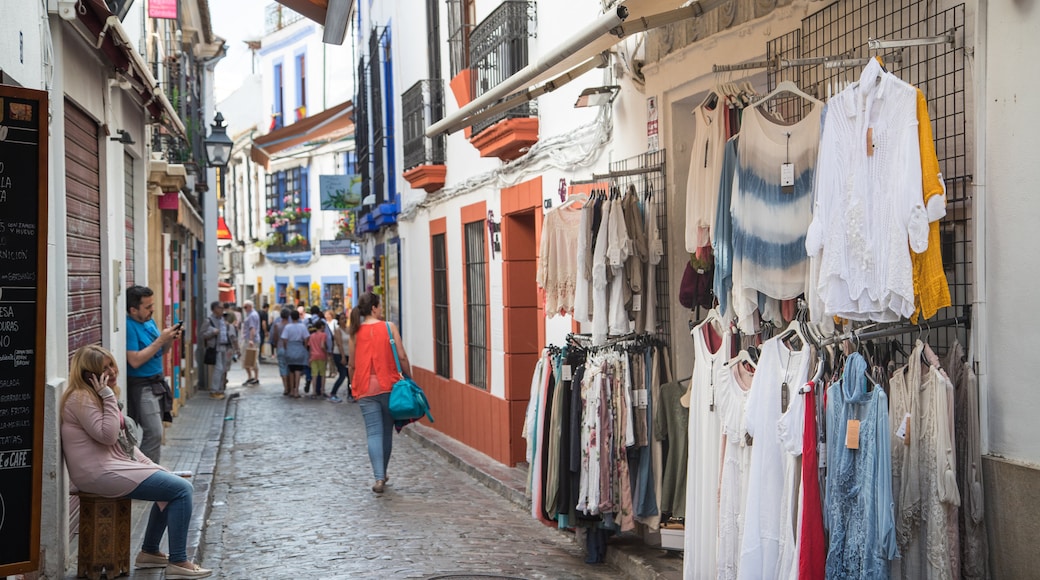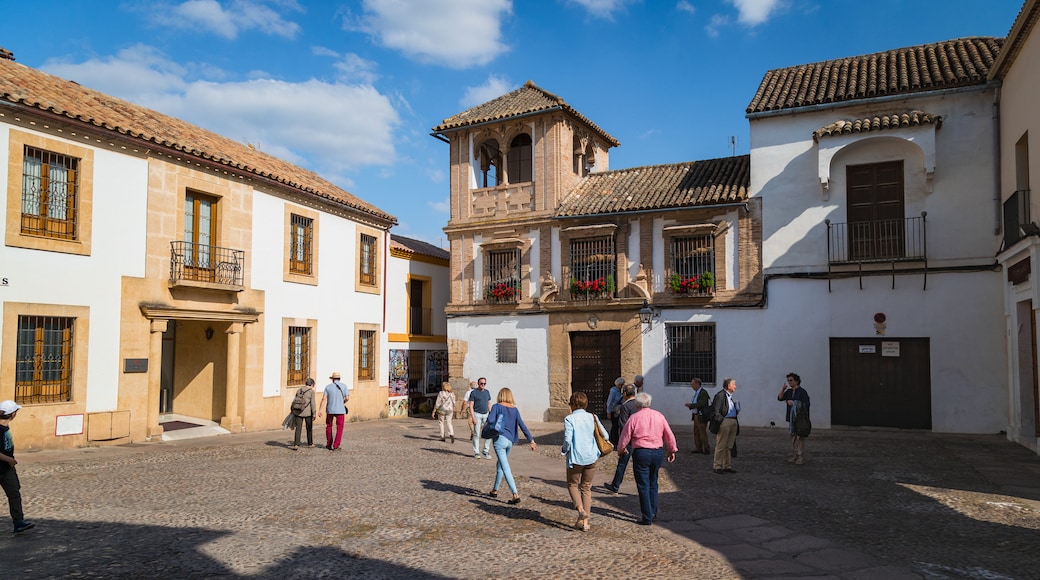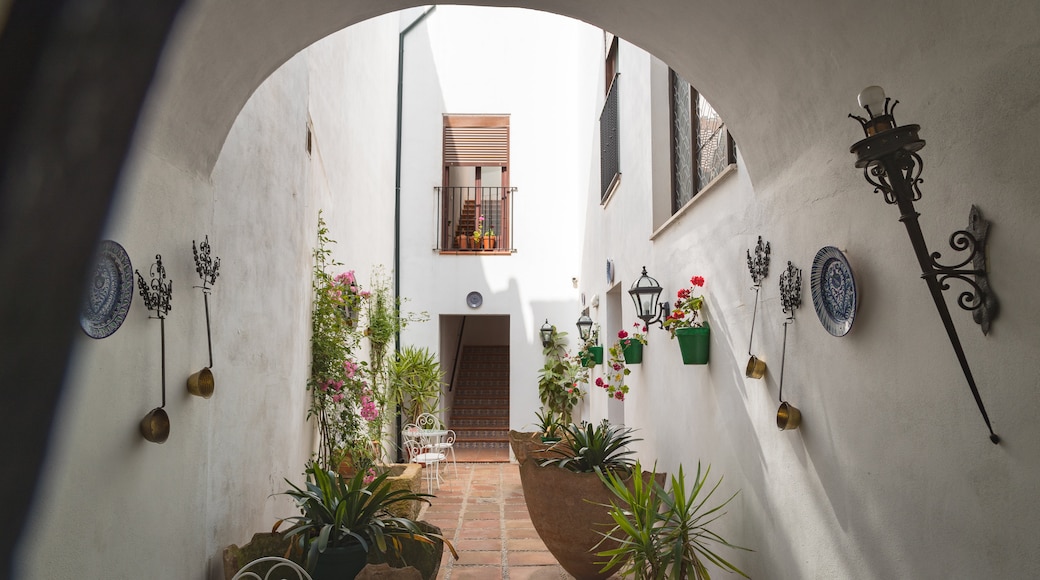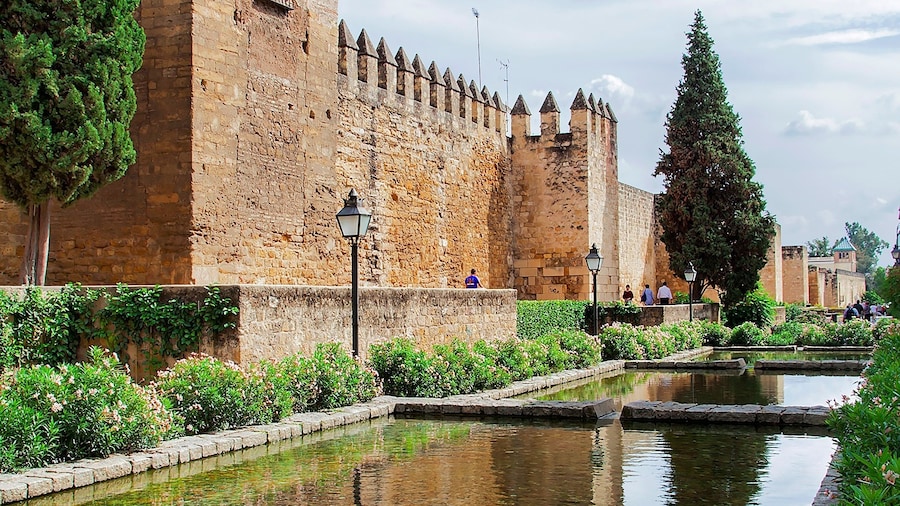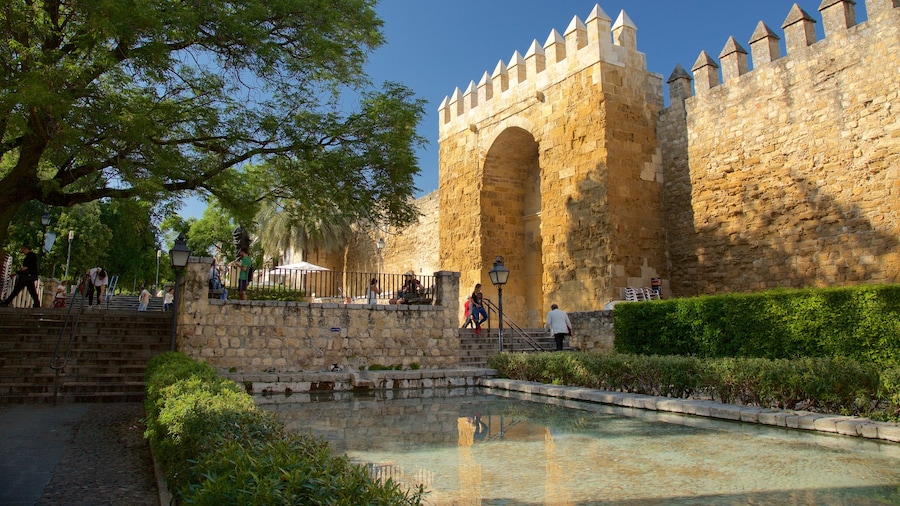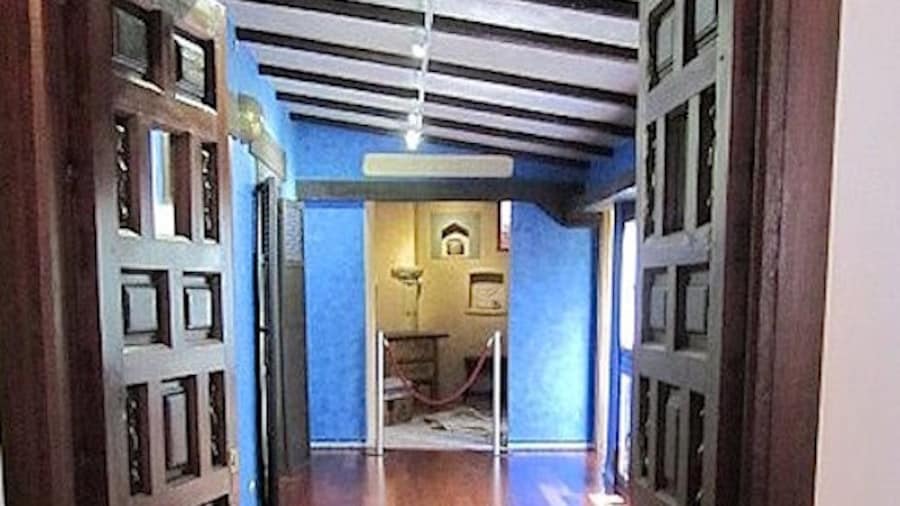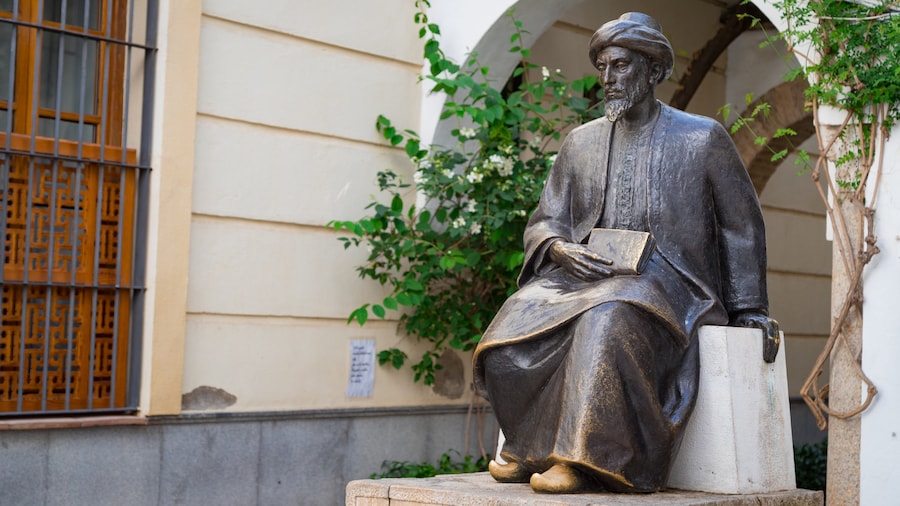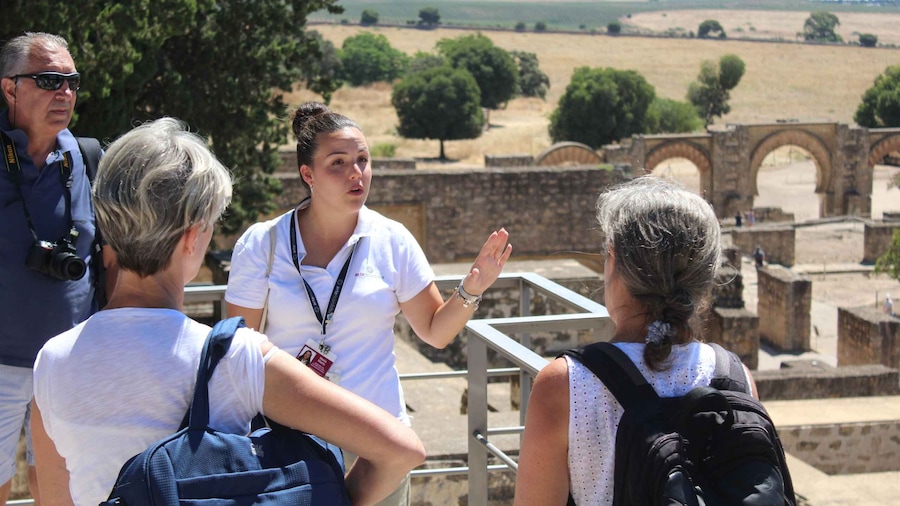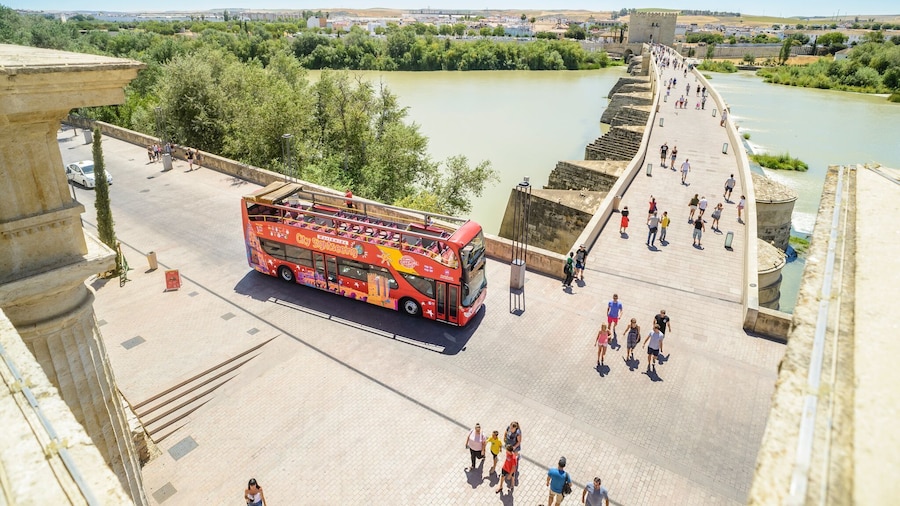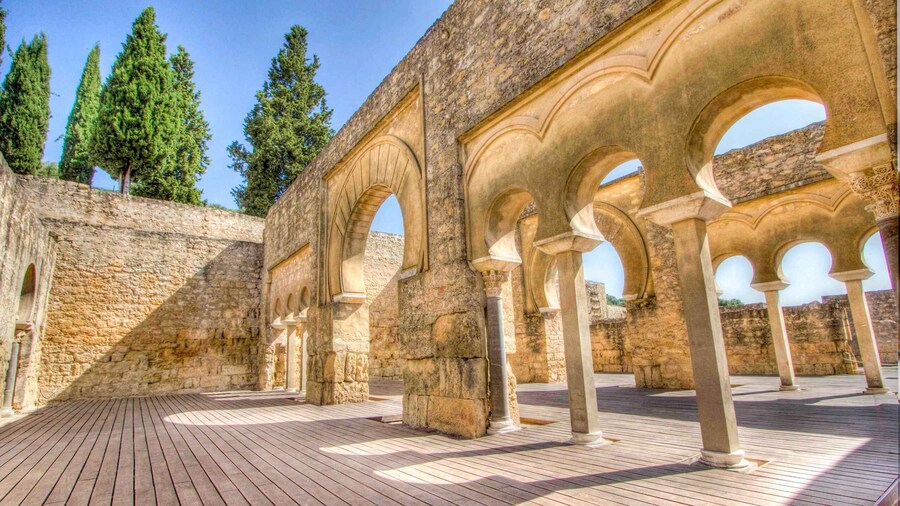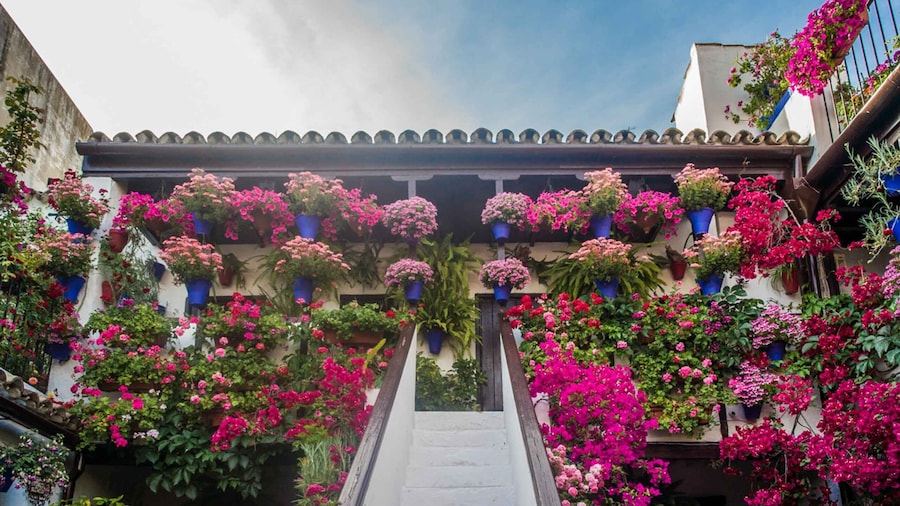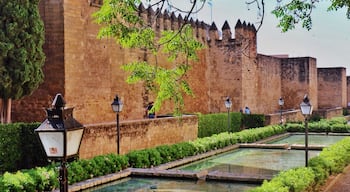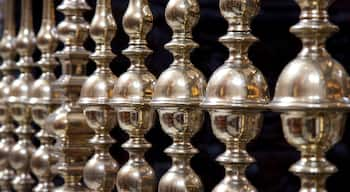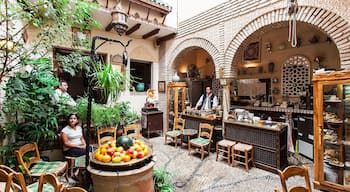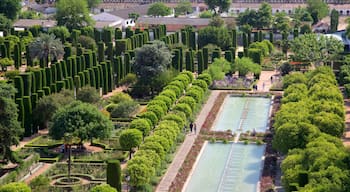Discover centuries worth of Jewish history when you tour the streets, museums and buildings of this enchanting part of Cordoba's Old City.
Explore the captivating network of narrow, whitewashed streets that make up Cordoba's partially walled Jewish Quarter, or La Juderia. This ancient enclave dates back to around the 9th and 10th centuries and encompasses a 700-year-old synagogue, plazas, statues, silversmiths, jewelers and museums.
Access the quarter through the 14th-century Puerta de Almodóvar, or Gate of Almodóvar, the only surviving medieval gateway into the city. Before you go through, pause to look at the statue of Seneca, a Roman philosopher and playwright who was born in Cordoba.
Make your way to Judios Street, one of the quarter's main streets and the home of the Cordoba Synagogue. This important place of worship was founded in 1315 and is one of only three medieval synagogues in Spain to have survived the expulsion of Jews in 1492. After this event, the building was used as a hospital and a school. Step inside and admire elaborate stucco work with Hebrew texts and mudejar-style geometric patterns.
Opposite the synagogue is the House of Sefarad, a 14th-century building that is now a museum dedicated to Jewish-Spanish culture, history and traditions. Examine photos, tools, crafts, clothing and more as you tour the museum's exhibition halls.
At the end of Judios Street is the Plaza Maimonides where you will find a bronze sculpture of the 12th-century Jewish philosopher and author Mose ben Maimon.
Visit the late 14th-century Chapel of San Bartolomé which was founded at a time when the Jewish population was forced to convert to Christianity. Inside is a gothic vaulted ceiling and walls decorated with tiles and heraldic emblems.
Shop for jewelry, leather goods, ceramics and other craft products at the local souk, an arcade of different shops in a 16th-century mansion. Among the other sights to look for is the Tower of Bethlehem from the old Juderia Castle. Today, it forms part of a private residence.
The Jewish Quarter in Cordoba’s Old City is close to bus stops and garages where parking is available for a fee.
